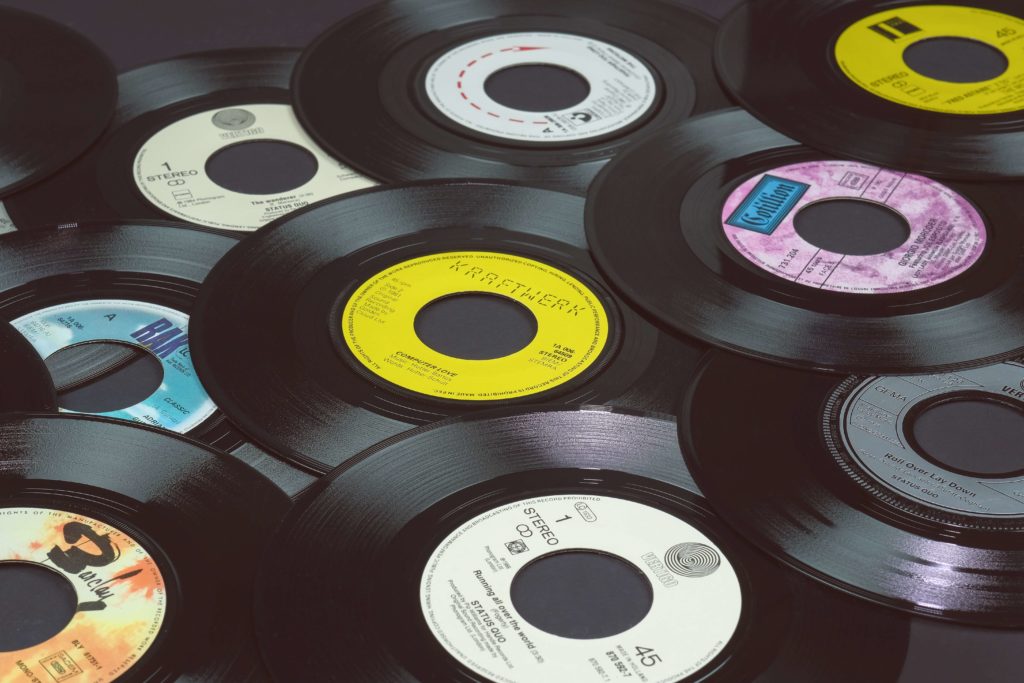
Considering the vast majority of the music ever released is available for our listening pleasure at little more than the click of a button these days, it might seem strange or a bit regressive, to think that vinyl records are more popular now than they have been in decades. But they are.
The CD era, which is still hanging on by the skin of its teeth, saw the vinyl record all but forgotten in favour of its cheaper, clearer and more compact (by both name and design) cousin. But once the digital revolution kicked in and CD sales began to dwindle, real music fans who had no desire for the technically immortal, yet oddly ephemeral nature of the mp3, turned back the clock and started raiding their parents vinyl record collections for a taste of authenticity. Since the turn of the century, the vinyl record industry has continued to flourish (indeed, in dance circles it never truly died), and if you’re reading this, chances are you too have caught the bug.
But, as beautifully imperfect as they sound and as glorious as they look, vinyl records were just not built to last, so to keep your treasured collection from turning to dust, here are a few things you might need to know.
Storage
Whether you inherited a bunch of old Beatles albums from your Dad or have just popped to the local music store (they still exist, I promise) to pick up the latest indie record, the first thing you’ll want to do when you get them home is to get them somewhere temperate. Heat is not a friend of vinyl. Store your records in a place that is as far as possible from direct sunlight and is temperature controlled, remembering the keep them in some kind of loose order, as nothing is more damaging to a record than somebody madly fingering through their collection. Keep all of your records in their original covers (where possible), and if you don’t have access to the original covers, buy some acid-free plastic sleeves.
Cleaning
Over its lifetime, a record will be exposed to all kinds of pollutants, from dust and smoke, to oil and even (in some wild cases) urine. In these cases, wear and distortion will be visually and audibly noticeable and it’s time to give your records some much needed attention. Cleaning a record is a simple procedure, but you’ll need the right tools and a steady hand.
- Take a soft, clean cloth and dampen it with a store-bought cleaning solution. You can make your own with a mixture of 20% isopropyl alcohol and 80% water, but it will damage records made from shellac.
- Make sure the water is not hot or cold, but lukewarm, as very hot or cold water can be very damaging indeed.
- Clean the record in a slow, circular motion from the middle to the edge or from the edge to the middle, making sure not to apply too much pressure.
- If there are noticeably damaged parts of the record, you should begin to see them clearing.
- Pat the record dry with a soft towel on both sides and leave it to dry off completely in its original sleeve (leaving it out in the open would just mean you’d have to clean it all over again) before playing.
Repairs
Though repairing a record is far from a simple task, it is possible (to an extent). Obviously if a record has been snapped in two, it’s beyond help, but if there are small cracks, chips or excessive wearing, there might be hope!
Cracks – For small cracks, take some rubber cement and apply it to both sides, holding it until it hardens. This should take around 10 minutes. Next, take some black electrician’s tape and apply it to the edge of the record up until the first groove. Let it set for a few hours and then pick away at the tape. The cement will leave the playing surface, but remain in the crack itself. Job done!
Gouges – When a record skips, this is due to an excessive gouge in the record that catches the needle. To fix these gouges, take a small amount of super glue and apply it to the area, using just enough to fill in the gouge and make it level with the rest of the record. Then try playing the record in this area several times to create a new groove. Job done!
Warping – To fix an excessively warped record, take two sheets of uncut, replacement window pane glass and heat up your oven to around 175 degrees fahrenheit. Place the warped record between the two panes of glass and place them and the record into the oven. Let it sit in the oven for a couple of minutes, then remove and place a heavy object on top of it. Let it cool until the glass is ok to touch and then inspect your record. If it isn’t fixed, put it back in the oven and try again. Job done!
DOs
Learn how to cue up a song – Cueing up a song on a record is an art form in and of itself, which takes practice, a keen ear and a keen eye. Though it might seem convenient to simply use your hand though, you should always use the cueing level to raise and lower the needle. Using your hands, it’s easy to slip and catch a groove, damaging not only the record, but the needle too.
Be gentle – Make sure you slowly dip the needle into the silent area of the groove (you’ll learn to spot it with experience) and only raise it when the song has finished, otherwise you’ll end up with clicks and pops, which will develop over time and leave your record sounding more like cooking popcorn than a musical masterpiece.
Save the sleeve – Try not to dispose of the poly outer sleeve that your record came with. It might not look particularly fetching, but it is there for a reason, and will protect your records far more effectively than the more aesthetically appealing cardboard sleeve.
Put your records away – As soon as you’re finished with your records, put them away immediately. Leaving them exposed to the air for too long leaves them exposed to the dust and the dirt, a vinyl records worst enemies.
DONTs
Stack your records – Whether they are in their sleeves or not, stacking vinyl records will lead to warping and cracking, especially as your collection grows. Always store your records upright on a shelf as you would a book collection.
Touch the surface – Whenever possible, always hold your records by the edges, as if you touch the surface, even slightly, the oil on your fingers will be left on the record and will attract dust, which will inhibit the quality of the music. If you do accidentally touch your record, use a liquid record cleaner solution as soon as possible, but don’t simply wipe your shirt on it, as this will do more harm than good.
Pick up a spinning record – This should go without saying, but you should always wait for the record to come to a complete stop before lifting it out of your player.

